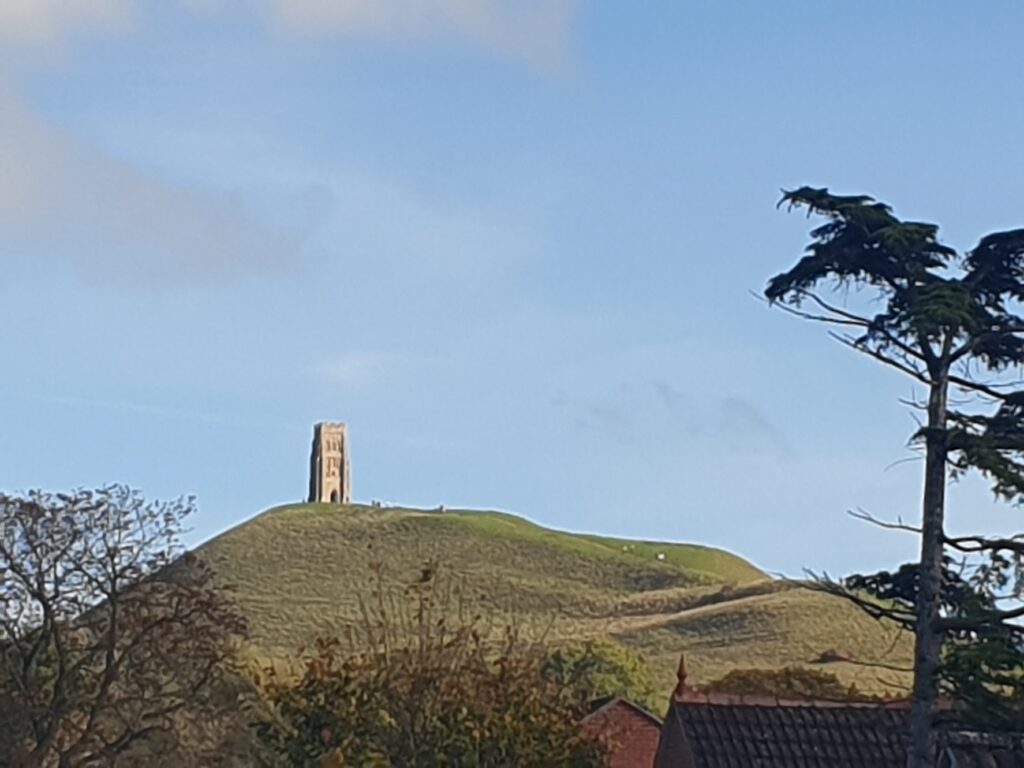
It is very handy for the long distance adventure cyclist when all of the rain falls overnight. Thus it was that I set out from the charming small Somerset town of Wiveliscombe in a newly washed world, with the promise of another fine day of cycling. And so it proved. It would be hard to conceive a route that showed a finer cross section of rural England than today’s wonderful offering. A mixture of the greenest hills and the longest views of the south-west, with the oddball experience of Glastonbury thrown in for good measure.
My ultimate destination today was the Stonehenge Inn, just a couple of miles from the famous stones themselves, an undulating journey – as it turned out – of some 95 miles. I could have done with an extra 30 minutes at the end of the day, and I know exactly where I could have got it from; but early starts are not my speciality, and the clocks don’t go back for a few more days. And so I got moving as soon as I could and crossed the first set of hills to Bishops Lydeard, where I found an unexpected and welcome cafe to provide an injection of fuel ahead of the more serious ascent of the Quantock range of hills that stood between me and Bridgewater. It should be noted that I had to go via Bridgewater, and not Taunton, due to the boundaries of the OS maps in these parts. It would have been all too easy to stray over the wrong line and find myself unexpectedly in map 193 ahead of time. But, with the help of my support team (Mrs W), this was avoided. The price was a long, stiff climb; but the reward was a view right out across the sun-kissed Severn estuary to a distant South Wales.
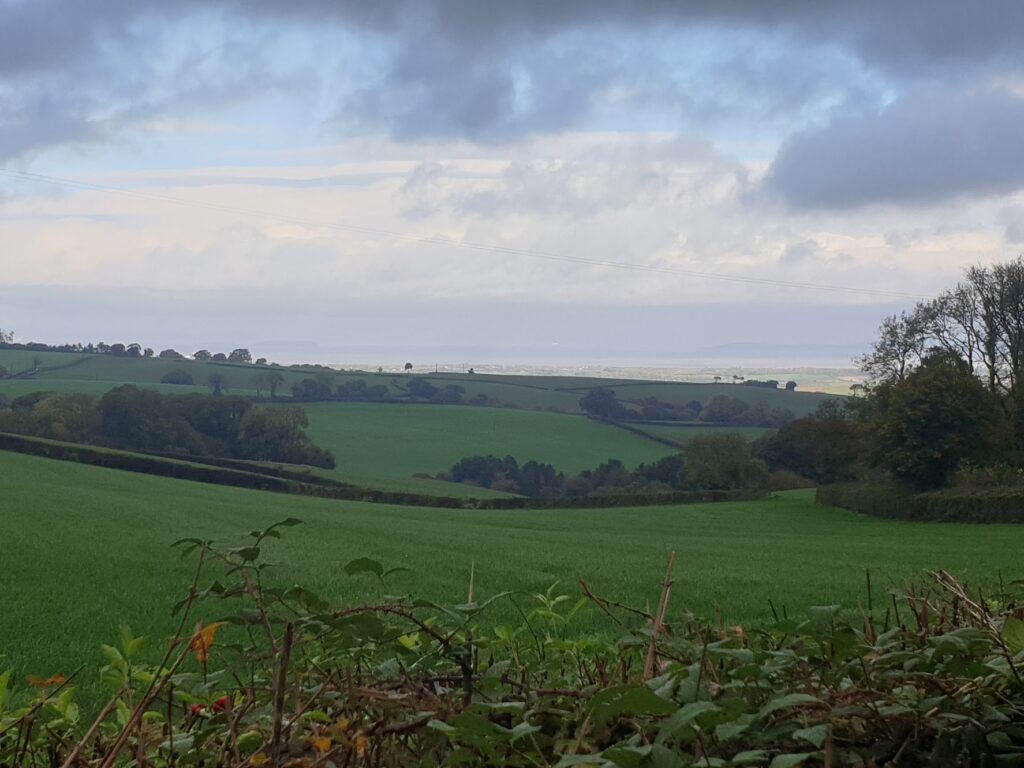
The descent to Bridgewater was equally dramatic and I had a quick look at the town centre on my way through. To be honest, this was out of morbid curiosity because I have independently heard disparaging reports of this place. I don’t know what is wrong with it. It seemed OK to me at first glance. Nothing exceptional and nothing too depressing either. It has a brand new town centre cinema, which can only be a good thing. It also has a rather unwelcome block of 1960s flats; but not many towns escaped the 60s unscathed. On the whole, it felt nice enough to me. I went away none the wiser. I wont be moving there next week; but there are worse fates.
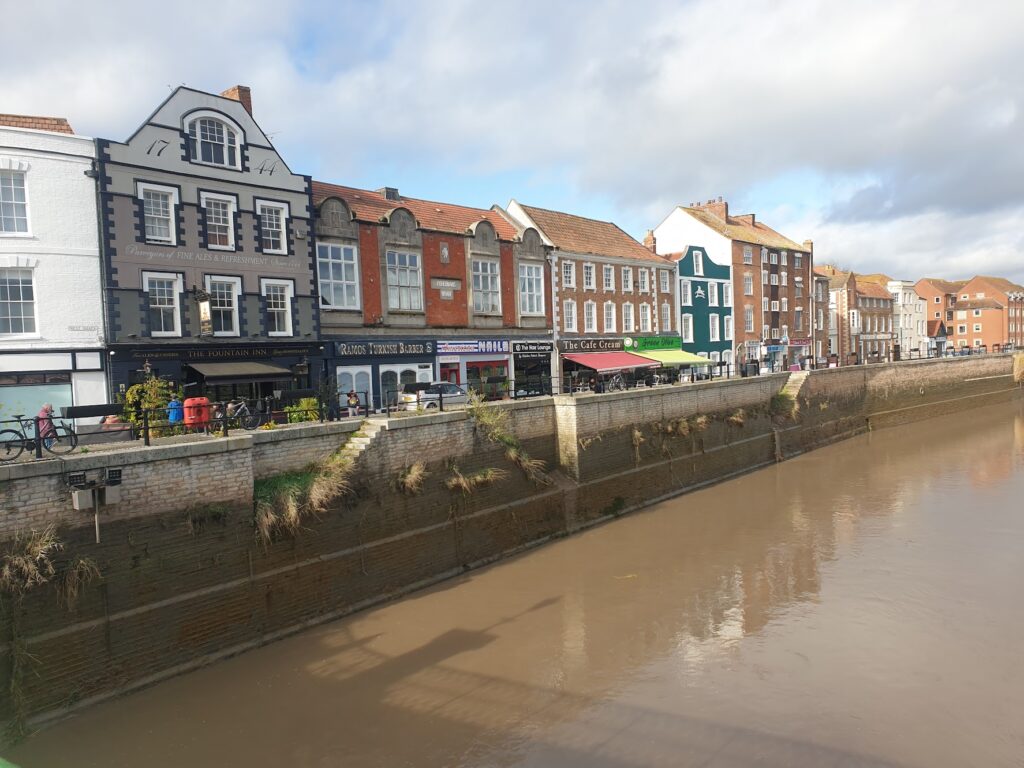
The country after Bridgewater was a pleasure to cycle through. I was on the northern fringes of the Somerset levels, a broad area of drained land not unlike the fens of East Anglia. But actually, really quite unlike the fens, I thought, because you are never far from a hill or a pretty village. There seem to be a succession of ”islands” rising from the flat land that keep it interesting. These are often the location of settlements, usually adorned by old churches, and so the flat bits in between are nothing more than interruptions in a rolling landscape. One of the most prominent and surely the most famous of these islands, rising from the flat hinterland, is the one upon which the town of Glastonbury sits. The highest point is the evocative Glastonbury Tor, crowned with its tower and visible from many miles away, drawing the eye as you approach. According to tradition, this is (possibly) the Isle of Avalon, of Arthurian legend. When you see it rising above you, that is not impossible to imagine.
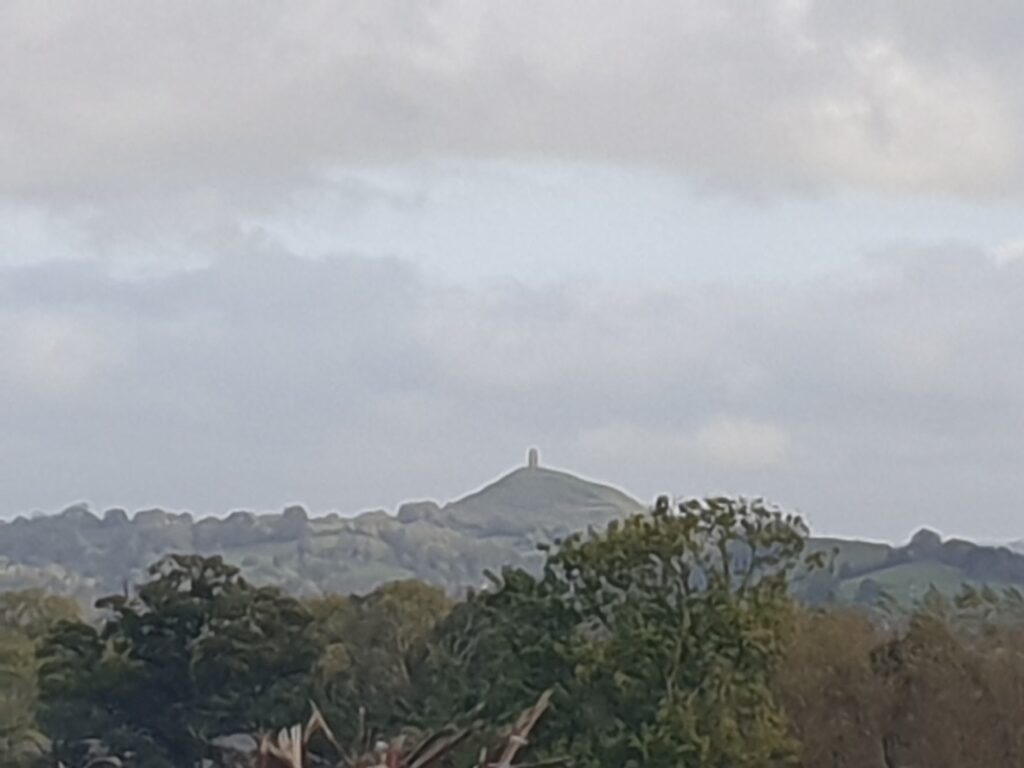
There are links in legend to Joseph of Arimathea, the uncle of Jesus of Nazareth, who is claimed to have visited Britain and built the very first Christian church here. He is supposed to have driven his staff into the ground on Wearyall Hill, above the town, whereupon it took root and sprouted into a holy thorn tree, flowering twice every year ever since, around Easter and again – unusually – at Christmas. The tree itself was destroyed by the Puritans in the English Civil War; but a tree in the Abbey grounds was grown from a cutting, so it lives on through its descendants. The reigning monarch has received a sprig for their Christmas table every year since at least the early seventeenth century. There also claims that Joseph brought with him the Holy Grail and buried it in the ground where the holy Chalice Well spring now emanates. He is said to be buried somewhere in the Abbey grounds, as are both Arthur and Guinevere. It is potent stuff. Some stories have a young Jesus accompanying his Uncle Joseph on an earlier trip here, and it is this myth that forms the basis for the rousing hymn ”Jerusalem”: And did those feet in ancient times, walk upon England’s mountains green?
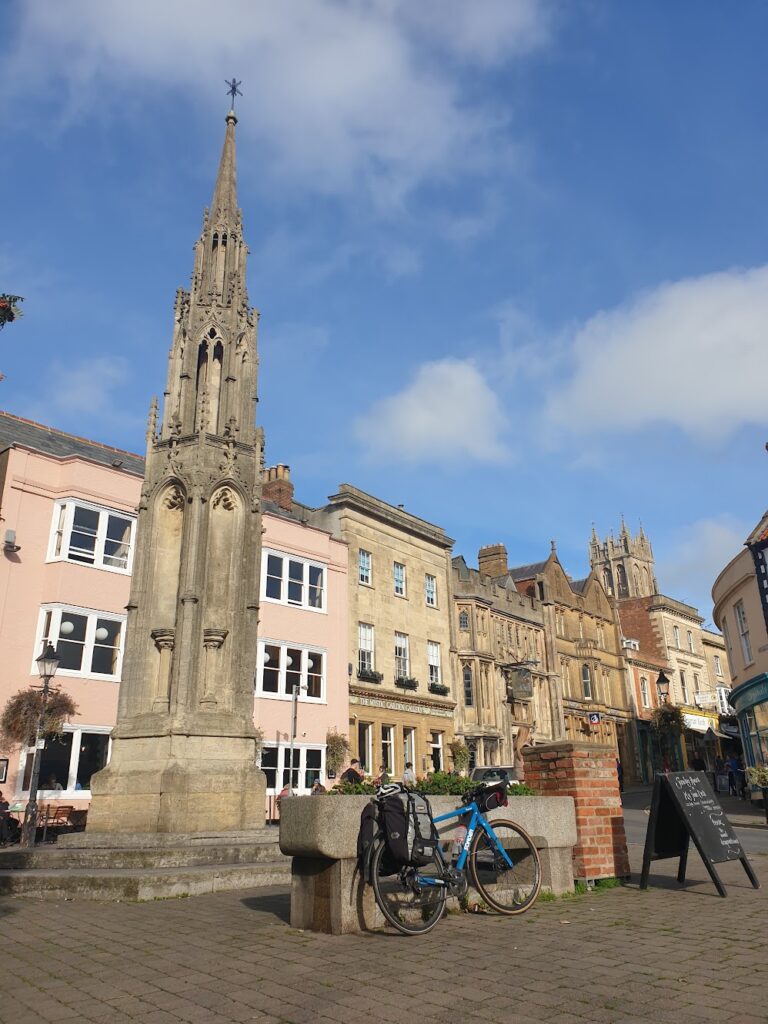
You can believe what you want about the mythical past of Glastonbury; but it certainly acts as a magnet to a weird assortment of people. I sat in the sun in the market place, eating my lunch, and watched a strange and eclectic collection of folk come and go in the town. Some were a little shabby, others more suited to Elvish ways. Many accents and languages could be heard in this small country town. The shops sell crystals and organic and silk garments, and go by the name of ”Man, Myth and Magik” or ”Good Karma”. And there are plenty of them. In one doorway, a young man was playing a ukelele and singing to the world. It really is different. I will say this though: as bizarre as it may all be, everyone seemed calm and happy.
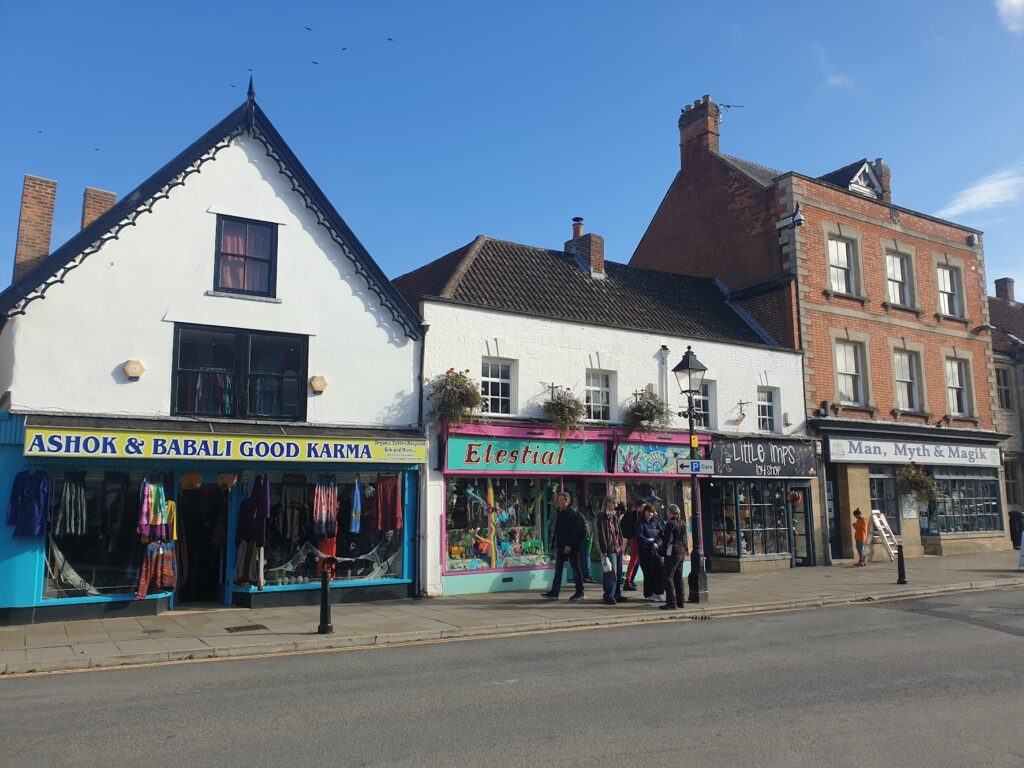
After lunch, I pressed on through many more lovely villages, up and down green hills with far reaching vistas, and finally Somerset gave way to Wiltshire. For the last hour or more I rode alone through a succession of beautiful small villages in the valleys of the Rivers Wylye and Avon, with not a car to be seen. It was amazing. The whole day, once again, showcased everything lovely about this region of England. I arrived in near darkness at the Stonehenge Inn having been treated to some of the best cycling, in the best weather, that I could have imagined. Could I dare to hope the rest of this west to east crossing would be as good? Yes, I could! But only tomorrow ever really knows.
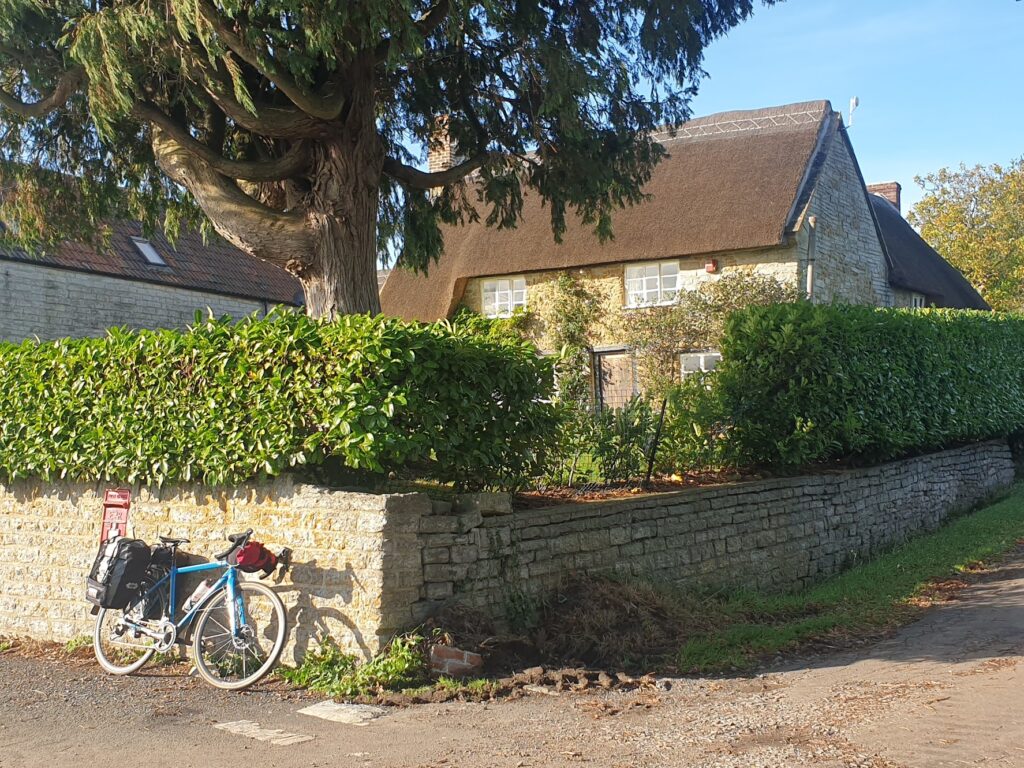

One reply on “Maps 182 to 184 – Avalon”
Ha, I’ve done that climb, and had that view!